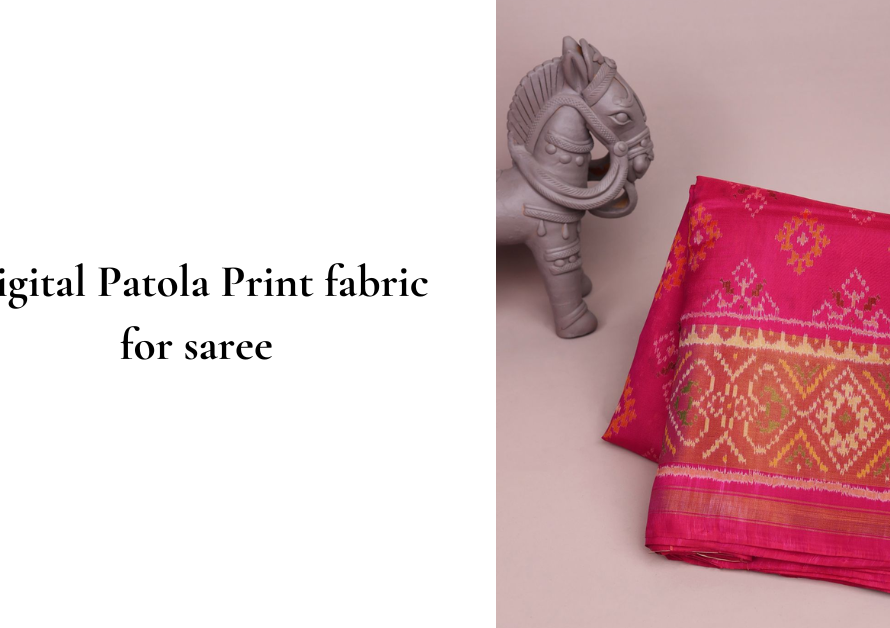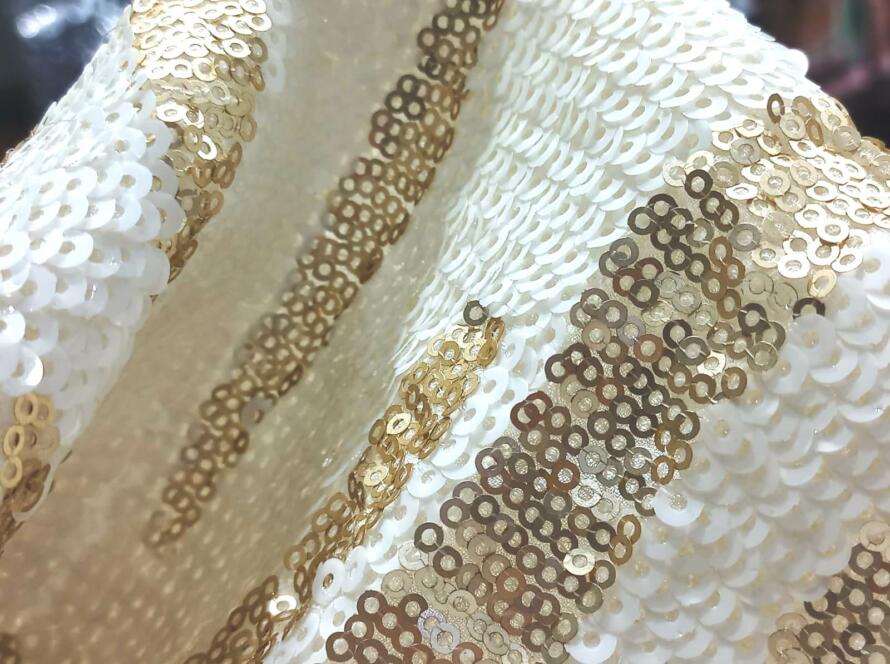The fashion industry is undergoing a digital transformation, embracing innovative tools that enhance the shopping experience.
One of the most exciting advancements is the adoption of digital fashion and virtual try-ons. Fashion brands are integrating virtual try-on technology and augmented reality (AR) to allow customers to visualize how clothing will look on them without ever having to step into a physical store.
Digital Fashion and Virtual Try-Ons: The Future of Fashion Shopping
This revolution is not only improving customer convenience but also reshaping how fashion is consumed globally.
The Rise of Virtual Try-Ons
Virtual try-ons use AR and advanced imaging technology to create a personalized experience for customers. By scanning their body or uploading images, users can “try on” various outfits virtually, getting a clear idea of how garments fit and look on them. This technology is particularly popular in e-commerce, where online shoppers can often feel unsure about how an item will look in reality. With virtual try-ons, customers no longer need to guess their size or fit—they can see the results immediately on their screen.
Benefits of Digital Fashion for Consumers and Brands
- Personalized Shopping Experience: Shoppers can explore a variety of clothing styles and sizes, seeing how each item will appear on their own body. This personal connection leads to higher customer satisfaction.
- Sustainable Fashion: Reducing the need for returns helps the fashion industry minimize waste and promote sustainability.
- Global Reach: Fashion brands can offer their products to international customers without the limitation of physical stores, expanding their market presence.
How Brands are Embracing Digital Fashion
Luxury and high-street fashion brands alike are leveraging AR for virtual try-ons, providing a futuristic shopping experience that meets the demands of tech-savvy consumers. From designer outfits to everyday wear, digital fashion enables a whole new level of interaction between the consumer and the brand.
Madhav Fashion: Leading in Digital Fabric Innovation
When it comes to luxurious fabrics, Madhav Fashion stands as one of the largest and most respected companies in Asia. Specializing in premium embroidered fabrics, digital printed fabrics, and plain RFD fabrics, Madhav Fashion continues to lead the market in offering high-quality materials. The company’s adoption of cutting-edge digital printing techniques aligns with the growing trend of virtual fashion, enabling designers to create stunning, intricate patterns that customers can visualize in a virtual space.
As fashion moves into the digital age, Madhav Fashion is well-positioned to provide the fabric solutions needed for both virtual fashion designs and physical production. With an extensive collection of digitally printed and premium embroidered fabrics, the company supports designers and brands looking to elevate their creations and take full advantage of the virtual try-on revolution.
The Future of Fashion is Digital
With the rising popularity of virtual try-ons and digital fashion, the future of shopping looks more immersive and customer-focused. As brands and manufacturers like Madhav Fashion continue to innovate, consumers can expect increasingly personalized, convenient, and sustainable fashion experiences—making shopping not just easier, but more engaging than ever.
In conclusion, the digital fashion landscape is changing rapidly, and with companies like Madhav Fashion providing luxurious fabrics for both digital and physical designs, the possibilities are endless. From couture collections to everyday fashion, virtual try-ons are transforming the way we shop and experience style.
___________________________________________
1. What is digital fashion and how does it work?
Digital fashion refers to clothing and accessories designed or experienced in a virtual environment. Using digital tools, brands create 3D models of garments that can be tried on virtually using augmented reality (AR) or through virtual avatars. This process allows customers to visualize how an outfit will look on their body without physically wearing it.
In online shopping, customers can upload images of themselves or create an avatar that mirrors their measurements. The virtual try-on software then overlays the digital garment onto the image or avatar, giving a realistic representation of how the clothing fits and moves. This is a game-changer for fashion brands, especially in e-commerce, as it reduces uncertainty about sizing and fit, improves customer satisfaction, and decreases return rates. For brands like Madhav Fashion, which offers premium embroidered and digital printed fabrics, this technology allows for intricate fabric designs to be showcased virtually. Consumers can appreciate the textures and patterns without needing to visit a physical store, bringing fashion into a more accessible and interactive digital age.
2. How do virtual try-ons benefit consumers?
Virtual try-ons offer numerous benefits for consumers, making online shopping easier, more accurate, and more enjoyable. First, they allow customers to visualize how clothing will look and fit on their body without the hassle of physically trying it on. This can save time and reduce the need for returning products due to sizing or style mismatches.
Secondly, virtual try-ons help consumers make more informed purchasing decisions. By seeing how an outfit or fabric looks on them, they can better assess whether it complements their body shape, style, and preferences. Additionally, it enables shoppers to explore different styles and trends from the comfort of their homes.
For companies like Madhav Fashion, offering luxurious fabrics such as embroidered and digital printed fabrics, virtual try-ons allow customers to appreciate the quality and intricate designs in a digital format. This immersive experience helps consumers build a stronger connection to the product before purchasing, which is particularly valuable for those interested in high-end fashion.
3. How does virtual try-on technology help brands like Madhav Fashion?
Virtual try-on technology helps brands like Madhav Fashion by enhancing customer engagement, improving product visualization, and increasing overall sales. For a company known for its luxurious premium fabrics, the ability to showcase intricate designs virtually allows customers to experience the textures and aesthetics of embroidered and digital printed fabrics in a realistic manner.
This technology also aids in reducing the uncertainty of online shopping. When customers can see how a garment or fabric will look on them, they feel more confident in making a purchase, which reduces the rate of returns. Moreover, virtual try-ons attract tech-savvy shoppers who are drawn to innovative and immersive shopping experiences.
For Madhav Fashion, integrating virtual try-ons aligns with the company’s forward-thinking approach, providing a competitive edge in the global market. The convenience of viewing high-quality fabrics like RFD and embroidered textiles online opens up new markets, enabling international customers to explore and purchase luxury fabrics without the need for physical touchpoints.
4. What role does augmented reality (AR) play in digital fashion?
Augmented reality (AR) plays a pivotal role in digital fashion by blending the physical and digital worlds. AR allows users to experience virtual clothing or accessories overlaid onto their real-world image, creating a realistic simulation of how an outfit would look and fit on their body. This technology enhances the online shopping experience by providing customers with an interactive and personalized way to try on clothes virtually.
For fashion brands, AR-driven virtual try-ons reduce the need for customers to physically try on clothes, cutting down on return rates and improving customer satisfaction. Companies like Madhav Fashion can use AR to display their luxurious embroidered and digital printed fabrics, enabling customers to visualize these intricate designs as part of their wardrobe.
AR technology is especially beneficial for customers looking to experiment with new styles, fabrics, or trends. It allows them to instantly “try on” garments, make comparisons, and confidently make purchasing decisions. By integrating AR into their offerings, fashion brands can enhance user engagement, improve shopping convenience, and stay competitive in the evolving digital landscape.
5. How does digital fashion support sustainability?
Digital fashion supports sustainability by reducing waste, minimizing returns, and optimizing production processes. Traditional fashion involves high material use, overproduction, and significant waste, especially with unsold stock or returned items. With digital fashion, brands can create virtual samples and run digital collections, reducing the need for physical prototypes and lowering the overall material waste.
Virtual try-ons also decrease the likelihood of returns, as customers can visualize how an outfit will look before making a purchase, leading to more informed decisions. This means fewer products are shipped back and forth, reducing the carbon footprint associated with logistics.
For Madhav Fashion, which offers luxurious premium fabrics like embroidered and digital printed textiles, promoting sustainable practices through digital fashion aligns with modern consumer demands. By adopting digital printing methods, the company not only offers intricate designs but also reduces water and chemical usage, contributing to a more eco-friendly production process. In this way, digital fashion allows both brands and consumers to make environmentally conscious choices without compromising style or quality.
6. Can virtual try-ons replicate the experience of feeling fabric textures?
While virtual try-ons offer a highly visual and interactive experience, replicating the tactile feel of fabrics remains a challenge. Virtual try-ons focus on how garments look, fit, and move on a person’s body through augmented reality or digital avatars. However, the sensation of touching or feeling fabric textures is something current technology cannot fully replicate.
That said, advancements in visual technology have come a long way. Digital fashion platforms allow customers to see intricate details of fabrics like embroidery, lace, or digital prints up close. High-quality imaging enables customers to appreciate the design, sheen, and flow of the material. For brands like Madhav Fashion, known for its luxurious embroidered and digital printed fabrics, these visuals are essential for communicating the premium nature of their textiles.
Although the tactile experience is irreplaceable, virtual try-ons do enhance decision-making by giving shoppers a clear sense of how fabrics will look on them, whether it’s for daily wear or special occasions.
7. How is digital printing transforming the fashion industry?
Digital printing is transforming the fashion industry by enabling faster, more efficient production of high-quality fabrics. Unlike traditional printing methods, digital printing allows for more detailed and complex designs, giving brands the flexibility to experiment with intricate patterns, vibrant colors, and custom designs.
For brands like Madhav Fashion, digital printing has revolutionized the way they create and offer premium embroidered and printed fabrics. The precision and versatility of digital printing allow for customized designs that cater to a global audience, appealing to both fashion designers and end consumers. This process is also eco-friendly, as it consumes less water and energy, reducing the environmental footprint of fabric production.
Digital printing also enables fashion companies to respond more quickly to trends, producing on-demand collections with minimal waste. This aligns with the fast-paced nature of the modern fashion industry, where trends evolve rapidly, and customer demands for personalized, unique fabrics are high.
8. Why are virtual try-ons important for online fashion shopping?
Virtual try-ons are crucial for online fashion shopping because they bridge the gap between physical stores and e-commerce. In online shopping, one of the biggest challenges for consumers is visualizing how clothing will look on them without physically trying it on. Virtual try-ons address this issue by using AR and digital technology to offer a highly personalized experience, allowing shoppers to see how an outfit fits their body shape and size.
For fashion brands like Madhav Fashion, which specializes in luxurious fabrics, virtual try-ons allow customers to appreciate the intricate designs of embroidered and digital printed fabrics. Shoppers can get a closer look at these premium textiles, building confidence in their purchasing decisions.
Moreover, virtual try-ons reduce return rates, as customers make more informed choices. This enhances the overall shopping experience, making it not only more engaging but also more satisfying. In an era where convenience and personalization are key, virtual try-ons play a pivotal role in transforming online fashion retail.
9. What are the challenges of implementing virtual try-on technology?
Implementing virtual try-on technology comes with several challenges, such as the need for advanced infrastructure, accuracy in body mapping, and the high cost of development. For virtual try-ons to be effective, the technology must provide an accurate representation of how clothes will look on different body types, which requires sophisticated algorithms and high-resolution imaging.
Another challenge is user adoption. Not all consumers are comfortable with the technology or know how to use it effectively. To overcome this, fashion brands need to invest in user-friendly interfaces that make the virtual try-on process seamless and accessible to a broad audience.
For companies like Madhav Fashion, which offers luxurious fabrics, integrating this technology can be an opportunity to showcase their premium embroidered and digital printed textiles in an innovative way. However, it requires a well-designed digital platform and substantial investment in AR and AI technologies. Additionally, ensuring that the virtual try-on experience accurately reflects the unique qualities of these premium fabrics remains a key hurdle.
10. How will virtual try-ons evolve in the future?
The future of virtual try-ons will likely involve more immersive, hyper-realistic experiences powered by advancements in artificial intelligence (AI) and AR. As technology improves, virtual try-ons will become more accurate in terms of body mapping, fabric movement, and even texture simulation, offering a nearly identical experience to trying clothes on in real life.
AI will play a crucial role in analyzing customer preferences, offering personalized suggestions based on style, fit, and previous purchases. For companies like Madhav Fashion, this presents an opportunity to offer tailored recommendations for embroidered and digital printed fabrics that suit individual customer tastes.
Additionally, virtual try-ons may integrate with broader digital fashion trends, including virtual clothing for avatars in the metaverse or other digital spaces. This evolution will create new ways for consumers to interact with fashion, not just for purchasing but also for socializing and self-expression in digital environments. As technology advances, the gap between digital and physical fashion experiences will continue to close, making virtual try-ons a staple in the fashion industry.






